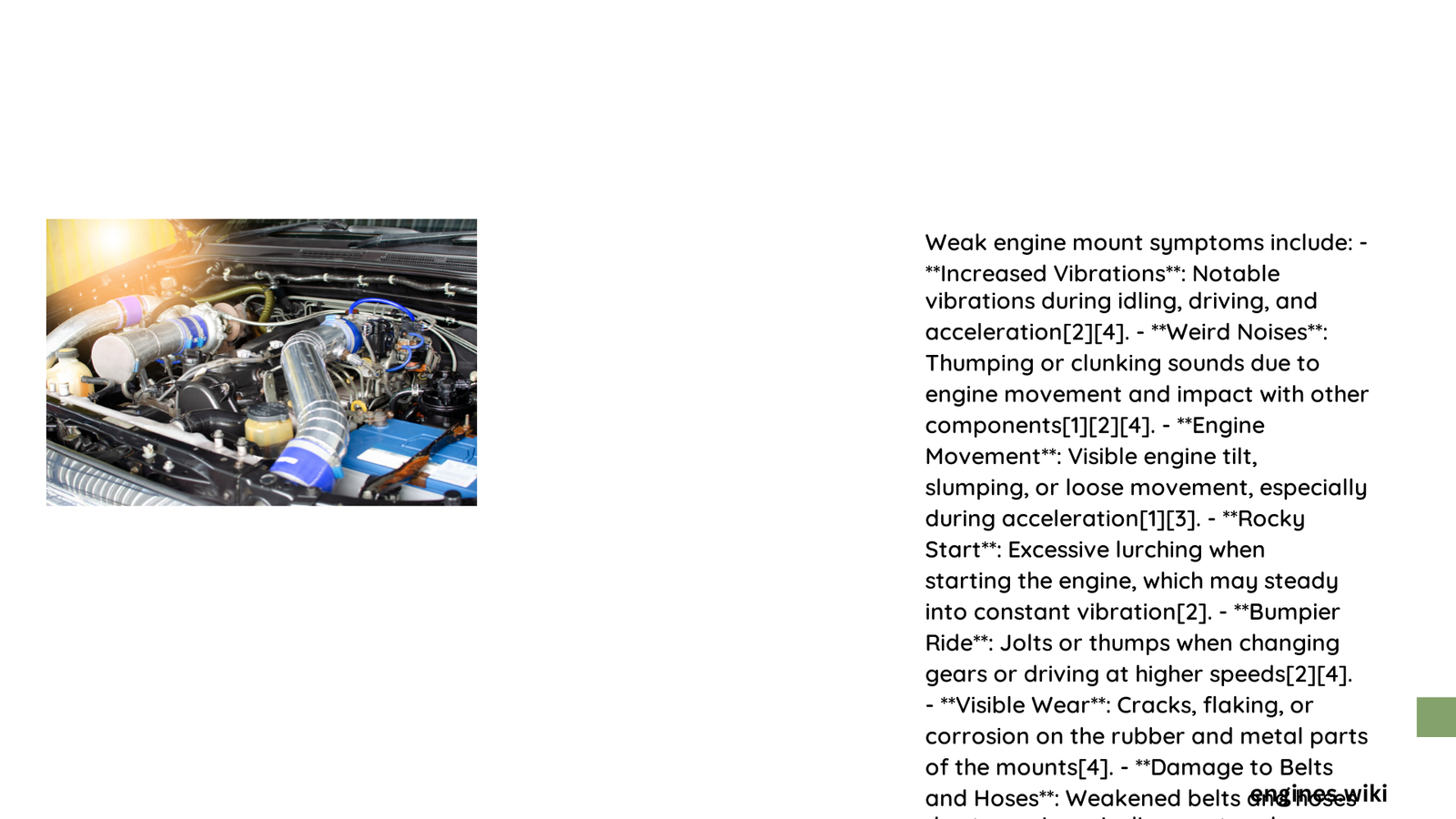Engine mounts are critical components that stabilize your vehicle’s powertrain, and recognizing weak engine mount symptoms can prevent catastrophic mechanical failures. When these crucial support structures deteriorate, they compromise vehicle performance, safety, and structural integrity, potentially leading to expensive repairs if left unaddressed.
What Are the Primary Weak Engine Mount Symptoms?
How Do Vibrations Indicate Mount Failure?
Weak engine mounts manifest through distinctive vibration characteristics that experienced mechanics can quickly identify. These symptoms include:
- Excessive Engine Movement: Noticeable shifting during acceleration or deceleration
- Increased Cabin Vibrations: Pronounced shaking felt through steering wheel and seats
- Irregular Idle Behavior: Engine appears to rock or bounce more than usual
| Symptom | Severity Level | Potential Damage |
|---|---|---|
| Minor Vibration | Low | Potential Mount Wear |
| Significant Shaking | Medium | Potential Alignment Issues |
| Extreme Movement | High | Risk of Mechanical Failure |
What Noises Suggest Engine Mount Problems?
Unusual sounds are critical indicators of weakening engine mounts. Drivers should pay attention to:
- Clunking Sounds: Particularly during gear shifts or sudden acceleration
- Metallic Knocking: Indicating potential mount structural breakdown
- Rhythmic Thumping: Suggesting uneven mount support
How Do Weak Mounts Impact Vehicle Performance?
Compromised engine mounts create cascading mechanical issues:
- Transmission Stress: Increased lateral movement causes additional wear
- Alignment Complications: Engine positioning becomes less stable
- Reduced Driving Comfort: Increased cabin vibrations and noise
What Causes Engine Mount Deterioration?
Several factors contribute to mount failure:
- Age and Mileage: Natural rubber degradation
- Extreme Temperature Exposure
- Poor Maintenance
- Aggressive Driving Habits
How Can You Diagnose Weak Engine Mounts?
Professional diagnostic techniques include:
- Visual inspection for visible cracks or damage
- Checking mount rubber for excessive softening
- Using specialized vibration measurement tools
- Performing comprehensive engine movement tests
What Are Immediate Steps After Detecting Symptoms?
- Schedule professional inspection
- Avoid prolonged driving with compromised mounts
- Replace mounts with high-quality, vehicle-specific components
- Consider comprehensive powertrain system check
Technical Insights into Engine Mount Failure

Engine mounts typically fail due to:
– Continuous thermal cycling
– Mechanical stress
– Chemical degradation
– Material fatigue
Replacement Considerations
When replacing engine mounts, consider:
– Original Equipment Manufacturer (OEM) specifications
– Vehicle-specific mounting requirements
– Performance-oriented alternatives
– Professional installation recommendations
Cost and Prevention
Average replacement costs range between $200-$600, depending on vehicle make and model. Regular maintenance and gentle driving can significantly extend mount lifespan.
Pro Tip: Annual professional inspections can help detect early signs of mount deterioration, preventing more expensive repairs.
Conclusion
Understanding weak engine mount symptoms empowers vehicle owners to take proactive maintenance steps, ensuring optimal performance and preventing potential mechanical failures.
Reference:
– Vibration Measurement Techniques
– Engine Mount Design Strategies
– Automotive Mechanical Diagnostics
